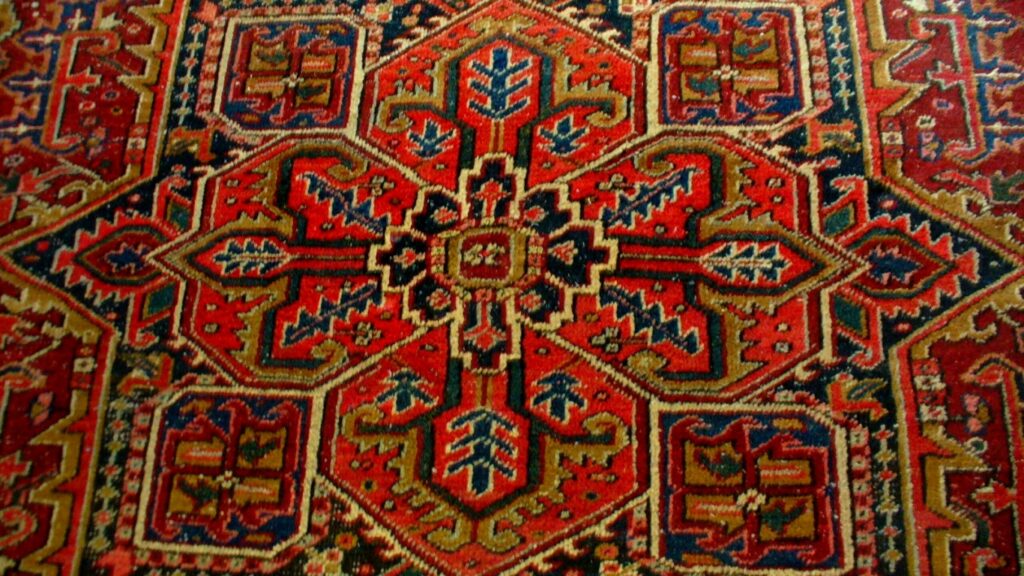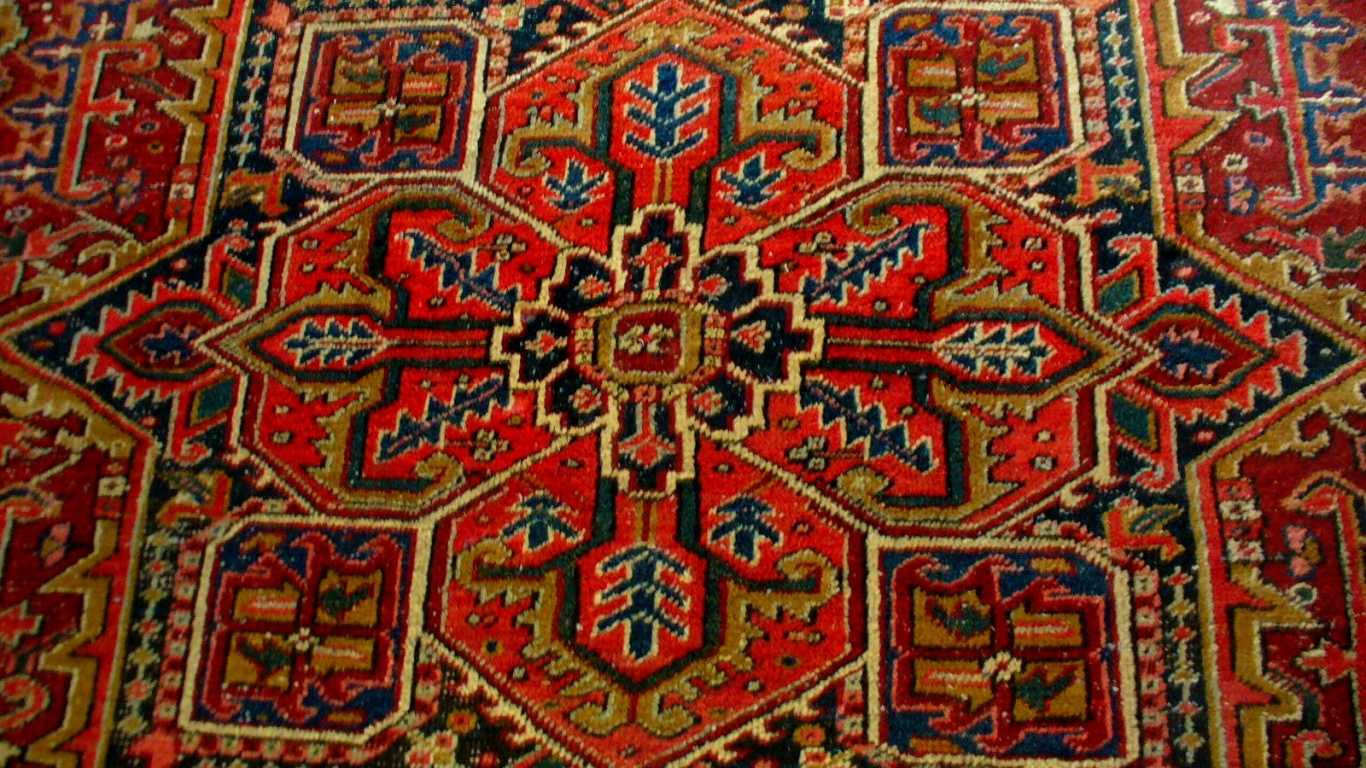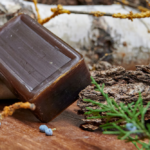The history of the oriental carpet goes very back along and today it is still alive. The art of carpet knotting is an ancestral knowledge that is transmitted from generation to generation. It developed in the steppes of Central Asia a long time ago – the exact place and date of birth of oriental carpet making are unknown. This know-how was extended by the training of the youngest in the art of knotting in the nomadic tribes and then in the sedentary tribes. The carpet, beyond its protective utility, became a fashion accessory, and later it evolved to become an indispensable covering for the home.
As a fashion accessory, carpets are available in several families: oriental carpets, classic carpets, Kilim carpets, etc. Moreover, some tapestries are also classified in the carpet category because their beauty and fineness can be close to that of a fine silk carpet… Let’s discover together the history of the oriental carpet.

Summary
- History
- The ancestral history of the carpet
- Origin of the oriental carpet
- The different types of carpets
- Oriental carpets
- Classic rugs
- Kilim rugs
- The evolution of the carpet in the tapestry
- Anecdotes
- The legend of the magic carpet
- The origin of the red carpet
- Turkish carpet
History
The ancestral history of the carpet
Today, carpets and tapestries are fashion accessories that embellish floors and walls. It can be installed throughout the house, regardless of the color and style of the room. The carpet is a real ornament. It dresses, decorates, and adorns a place like no other accessory can.
Do you know the origin of the carpet, from its birth to the present day? And the different families of carpets that exist in the carpet world? How has it changed over time?
Origin of the oriental carpet
The oldest carpets listed is dated from the 5th century BC. They originate from the steppes of China or Iran. It is rather difficult to identify the region precisely. Scientists agree, however, that the art of knotting handmade carpets has developed in Central Asia. Nomadic people needed protection from the winter cold, but more practical than sheep’s fur. These protections had to be mobile, easy to transport and create, but also resistant.
The looms are then set up in temporary homes. They were made of two pieces of wood, firmly installed in the ground for better stability – so they are horizontal. Between the pieces of wood, the weavers install the chain. Even today, looms are still installed horizontally but are foldable and easily transportable. At the time, handmade carpets were made from sheep’s wool and goat’s wool.
In 1947 archaeologists unearthed a tomb in Eastern Siberia, in the Altai Mountains, on the Mongolian border. This carpet is decorated with deer and horsemen. It consists of around 360,000 knots per square meter. This extraordinary handmade carpet is currently on display at the Hermitage Museum in St. Petersburg.
Since that time, carpet production has never stopped. The carpet market offers products of various quality, from the low-end (carpet made by machines with a low number of knots per square meter) to the high-end (handmade carpet made by weavers and weavers according to ancestral rites ).
The different types of carpets
Many types of carpet can be classified according to several criteria: origin, materials, color, etc.
Oriental carpets: these carpets are the most beautiful and the most intricate. Hand-knotted, they come from different regions such as Iran, Pakistan, Afghanistan, and even Uzbekistan. These carpets are precious and the price can go up quickly. Each carpet is unique, as much in the patterns as in the colors. The difference between an oriental carpet and a classic rug is in the number of knots per square meter. You only need to spread the strands to see the visible gap. The skill of manual weaving tends to disappear despite ancestral art.
Classic rugs: mainly made of wool or polypropylene, these rugs are made on machines and not by hand. They imitate Oriental rugs, which are handcrafted by weavers. Prices range from cheap rug to costly rug. Machine-made carpets have a fixing thread placed between the warp threads and the weft. The purpose of this thread is to mask the absence of real knots. This phenomenon is visible on the back of the carpet.
Kilim rugs: this type of rug is woven by hand, flat, wool, or cotton. We are talking about woven rugs. This technique is older than that of the knotted carpet. Kilim rugs are made up of interwoven warp and weft threads. These interlacing form patterns and designs. We are talking about woven rugs. The most used colors are blue, ecru and brick red. The patterns shown are often geometric and repetitive. They are produced in Iran, Turkey, China and India.
The evolution of the carpet in the tapestry
Initially used on the ground as protection against the cold, the carpet moves and adorns the tents of nomads. Carpets become tapestries when placed on the canvas of tents.
Tapestry weaving techniques are not very different from carpet weaving methods. However, the art of tapestry has existed since antiquity. Traces of tapestries can be found in ancient Greece, imperial China, ancient Egypt and even pre-Columbian civilizations.
Anecdotes
The legend of the magic carpet
The flying carpet or magic carpet is a legend. In fairy tales, it is used as a means of transport.
It is found in Russian folklore, but also Persian and Arabic mythology. The flying carpet is found in the tales of a Thousand and One Nights: King Solomon had a flying carpet that he then gave to the Queen of Sheba.
The flying carpet is also evoked in tales such as Aladdin. Of course, the levitation of an object remains in the realm of magic.
The origin of the red carpet
You may be wondering why the ceremonial carpet, the precious carpet of stars, is red?
In reality, there is a symbolism of colors, and it also applies to carpets. Each color has its meaning. The red carpet is used for people considered remarkable and honorable. Red has a positive connotation in our culture and elsewhere. In Asia, red is a symbol of happiness. That’s why this color is so present (signs, packaging, advertising, etc.).
Legend has it that an animal (a nian) devoured many people every year when the spring season came. Yet this animal was afraid of red. Those who wore red in their clothing, for example, were not eaten. They were called the lucky ones. Since then, the Chinese have got into the habit of decorating their houses in red during the Chinese New Year to bring good luck and chase away problems and evil spirits.
Red is an ambivalent color; it is the color of luck, but also that of blood. Its positive aspect represents the glow of the Glory of God. It embodies life, health, joy, and eternity.
The red carpet immortalizes the people who walk on it. Red color honors the presence of the powerful: heads of state, actors and actresses, etc. They represent an ideal, a fantasy.
Turkish Carpet
Turkish carpets are very common nowadays. The quality of Turkish carpets is undeniable. Colorful and lively tones are characteristic of these carpets.
Turkish carpets or Anatolian carpets are carpets made in Turkey. The oldest handmade Turkish carpets date from the 13th century. They were discovered in a city still very active in the production of carpets: Konya. Turkish carpets are comparable to Persian carpets. Their particularity lies in the type of knot used for the manufacture of carpets: the Turkish knot or Ghiordès knot (or Turkbaff). They are therefore thicker, made of wool, cotton and silk.
If you wish to buy Carpets and Kilims from Turkey, please do not hesitate to contact us by mail at [email protected] or to call us at +90 532 361 5149. We can help you to get in direct contact with producers or provide you everything that you need.











